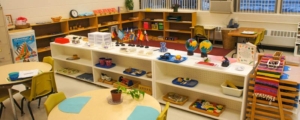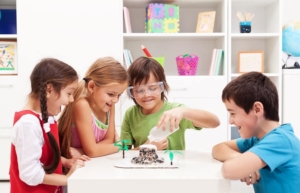In the field of early childhood education, an area that is often undermined is the usage of play in teaching children. By definition, play is engagement in an activity for enjoyment and recreation. Although, this enjoyment creates a comfortable environment and atmosphere for children which is also a great setting for learning.
Play allows for children to explore and investigate their own curiosities as well as using their senses to become well acquainted with the environment and people around them. While the usage of lesson planning and classes is still applicable when teaching younger children, incorporating play in learning allows childrento learn emotional, social, cognitive and communicative skills as well.
The amount of learning done from play time varies depending on the type of play. There are certain practices that can reinforce and involve skills and assets that children must be taught to have. Therefore the time devoted to play is not what makes it impactful, it is the kind of play that is offered to children.
Benefits of Play In the Classroom
When children are playing, they are in a comfortable environment and headspace. These are the ideal conditions for learning as well, making play a crucial method in teaching.
In play, children are given a certain freedom that allows for cognitive and creative development. Skills like decision making, such as choosing what to play with, or how to use a certain object to play is done by children. This is diffe rent from a normal classroom setting, where children are taught how to do things rather than deciding on their own.
rent from a normal classroom setting, where children are taught how to do things rather than deciding on their own.
Play time allows children to feed into their desire to learn about the world and follow their natural curiosities. This increased interest in the activity leads to children being fully engaged, which is when a child is able to learn the most.
Different Methods of Implementing Play and The Benefits of Each
While it can be understood how play is a great method in teaching, implementing it while still maintaining order in the classroom can be a difficult task.
To most people, play is associated with a time where a child acts freely. Although, when done in the classroom, play is facilitated in ways that allow for this freedom and curiosity to be guided and tamed with instructions and rules.
Free play can be seen as a method of teaching, as it is facilitated by teachers. Although, this method does not involve any “teaching” from the educator. Observing children’s play is helpful in pedagogical documentation, as it involves a child acting on their own will that teaches a lot about their natural behavior that can be helpful while teaching them later in the classroom. You can learn more about different practical methods of pedagogical documentation on our website that you can find here.
Guided play, while very similar to free play, is facilitated by educators, and the play children are involved in is restricted yet still guided by the interests of the child. This can involve playing with a certain toy, or even being taught a game by an educator.
Playful learning is a method where play is facilitated by educators, and there are set rules that the play follows. This method does not give children much creative freedom, but still creates an engaging environment where children are able to learn well. 
An example of playful learning is playing the game “red light, yellow light, green light” in the classroom. First, a teacher introduces the rules of the game, recognizing that it is a part of play time for the children as well. Simply put, the game’s rules state that a child has to stop when the teacher says green light, move quickly at green light, and move slowly at yellow light. While an educator introduces the rules and conditions, the children still view the activity as a game. The activity in mind is designed to teach children many things such as lawfulness and the colors of street lights, yet is a lesson conducted through play that is engaging for the students.
Misconceptions About Play
Teaching through play can be very enjoyable for both the teacher and the children, although it cannot be the only method of teaching in the classroom. Play is a time consuming method of teaching, and involves great planning and facilitation from the educators.
When teaching through play, not all children learn the same from the activity, as it depends on the amount of effort and attention a child puts in. Since play is heavily driven by personal interest and curiosity, using it as a method of teaching causes certain difficulties in maintaining an equal learning process for all children.
References
UNICEF, (2018). Learning Through Play, from https://www.unicef.org/sites/default/files/2018-12/UNICEF-Lego-Foundation-Learning-through-Play.pdf
Arrow, J. (2019, April 11). How to use play for learning. Edutopia. Retrieved September 20, 2021, from https://www.edutopia.org/article/how-use-play-learning.
Playing to learn. Harvard Graduate School of Education. (n.d.). Retrieved September 20, 2021, from https://www.gse.harvard.edu/news/uk/19/03/playing-learn.
What is play and why is it important for learning? THE EDUCATION HUB. Retrieved September 20, 2021, from https://theeducationhub.org.nz/what-is-play-and-why-is-it-important-for-learning/.

Comments